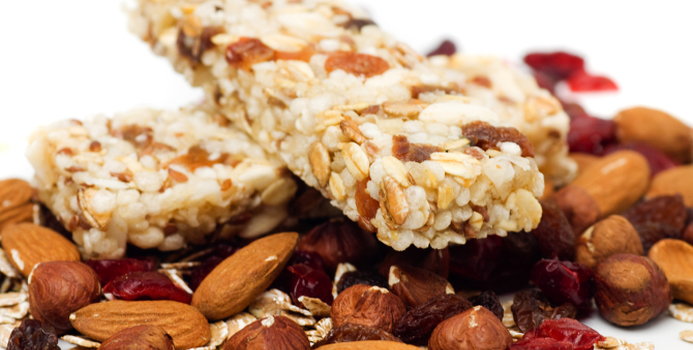You may have first seen sugar alcohol in diet products like protein bars or practically anything in the Atkins/South Beach line of food products. They are a key ingredient in most low-carb and sugar-free food options, as well as chewing gum. But what exactly is sugar alcohol?
The name is slightly misleading, because sugar alcohols aren't like ethanol (the kind of alcohol that gets you tipsy) and they're not like sugar, the kind of carbohydrate that causes a rapid spike in blood glucose. Scientifically speaking, sugar alcohols are so named for the way their molecular structure has been altered through hydrogenation, which results in an hydroxyl structure, aka alcohol. And while they are often produced in factories, sugar alcohols occur naturally and can be found in many fruits, vegetables, and other plant sources.
Benefits
The two biggest benefits of sugar alcohols are caloric impact and blood glucose effect. Although they are not calorie free, sugar alcohols have only about half the caloric impact of sugar. Their impact on blood glucose is much less dramatic than sugar, making them safe for diabetics.
Sugar alcohols do not cause cavities like sugar--their chemical structure prevents oral bacteria from digesting them. Their chemical structure also prevents them from being fully digested in the stomach.
Safety Measures
In terms of toxicity or mutagenicity, sugar alcohols are safe. They don't cause cavities, they don't have a dramatic effect on blood glucose, and they taste relatively similar to table sugar. But it's not all rainbows. Sugar alcohols do have gastrointestinal side effects in some individuals: cramping, bloating, diarrhea. So if you have a weak stomach, you might want to search out other alternatives or just go easy on the serving sizes.
The Varieties
The most commonly used sugar alcohols are erythritol, malitol, sorbitol, and xylitol, but the complete list is much longer. Each sugar alcohol varies in sweetness and caloric content. Xylitol is the sweetest and most calorie laden. Many sugar-free candies and other "sweets for diabetics" rely solely on large amounts of sugar alcohols to achieve the desired flavor. Other times sugar alcohols are used to disguise the overtly chemical aftertaste of non-nutritive sweeteners such as Nutrasweet or Splenda. (Its important to note that artificial sweeteners are different from sugar alcohols).
As previously mentioned, sugar alcohols can be found in many natural plant sources. Xylitol occurs naturally in fruit, mushrooms, and straw. Sweet potatoes, carrots, and pineapple are natural sources of Mannitol. And Sorbitol can be found in many fruits and vegetables and is usually produced from corn syrup.
While its use it not yet widespread, be on the lookout for Erythritol, a relatively new sugar alcohol that doesn't have gastrointestinal side effects.
Erythritol is unique in that it is metabolized differently than other sugar alcohols, and it also has the highest sweetness to calorie ratio, with a sweetness of about 80% compared to sugar and a calorie impact 20 times less than sugar.
It is made through a natural fermentation process, so it is usually marketed as a more natural sugar substitute. If Erythritol is not dissolved in water, it has a dramatic cooling effect on the tongue, similar to mint.



